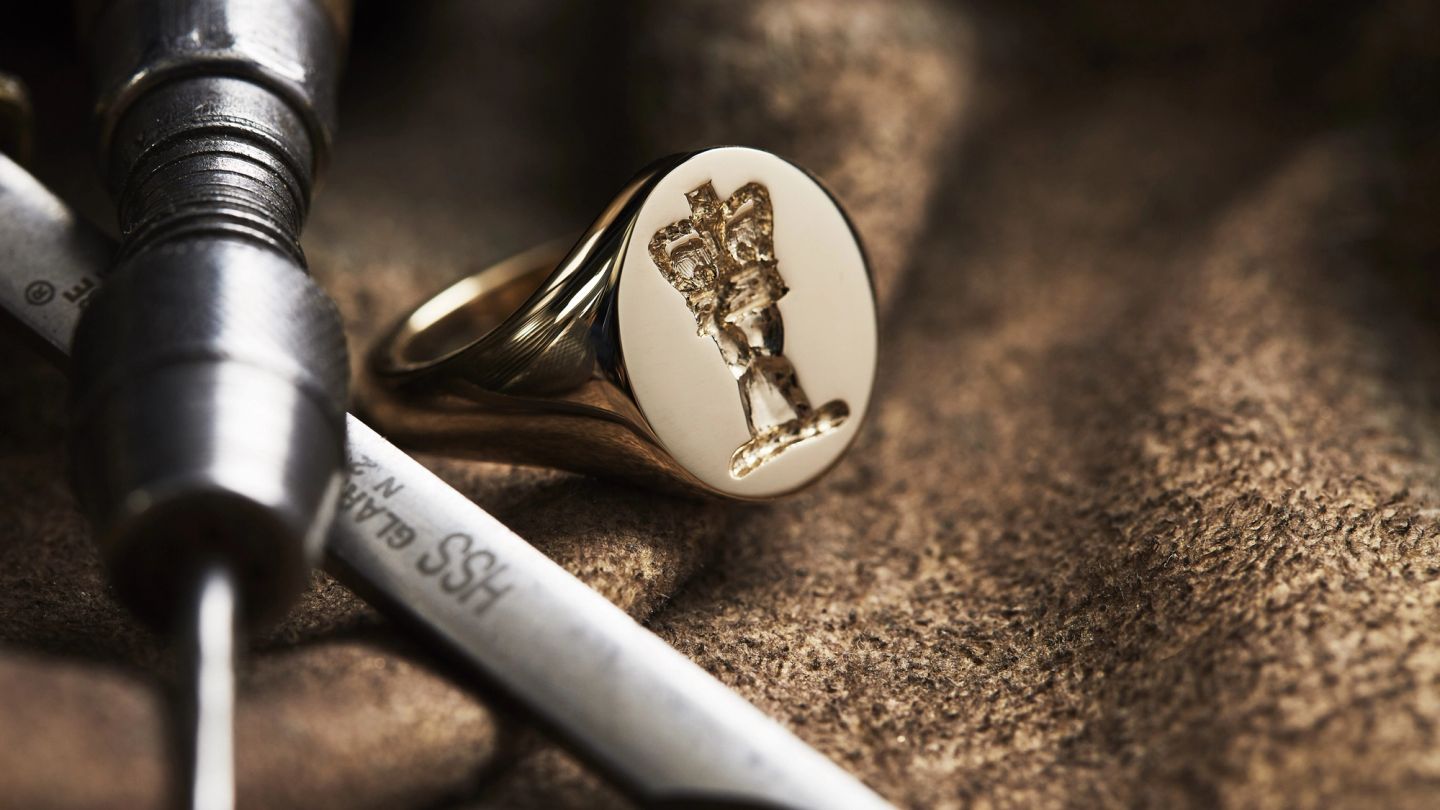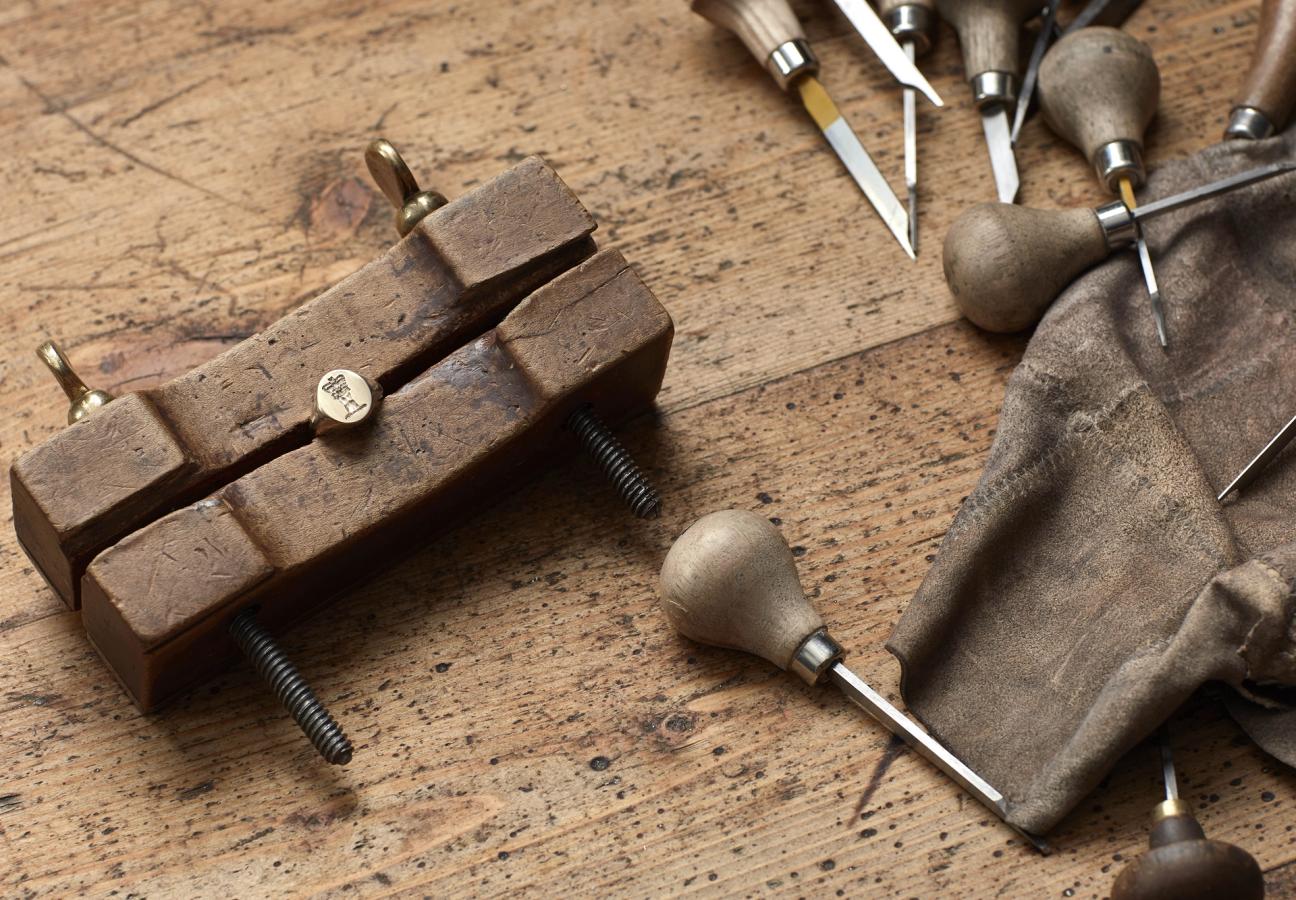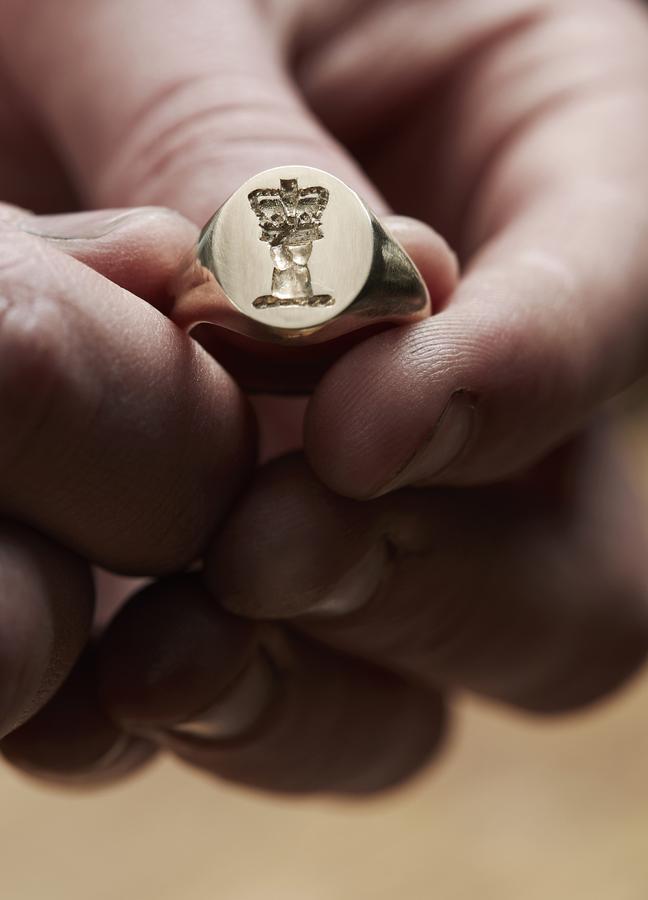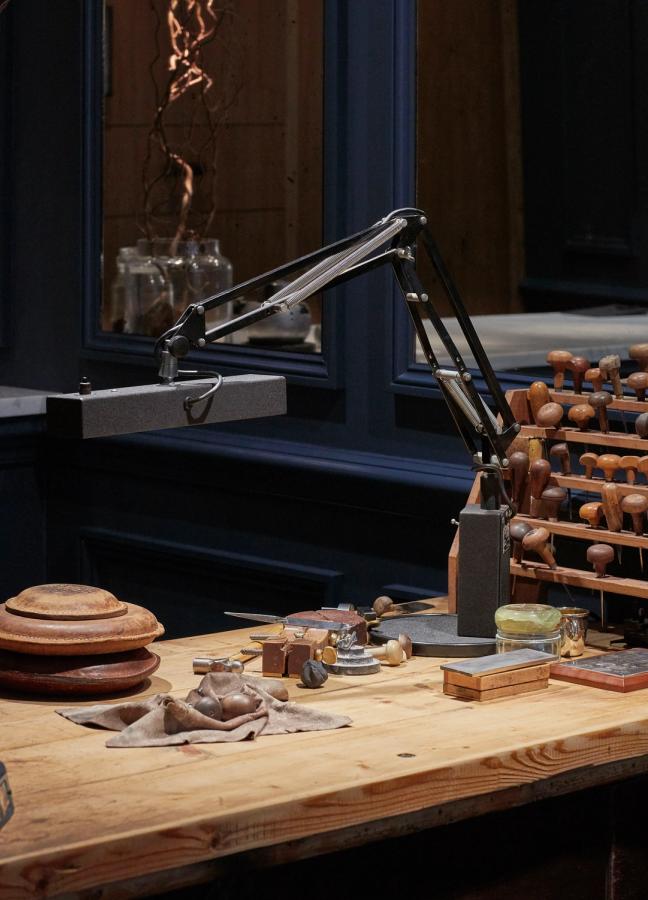

Should a modern man wear a signet ring?
With sales on the rise, we head to Rebus Signet Rings to discover what makes these little finger rings such a big deal
Words: Russell Norman
Photography: Tom Bunning
There are a handful of trinkets, objects and belongings that we see as the reserve of the upper classes. Classic cars, to name one. Mayfair townhouses, to name another. Black labs, if you’re looking for a third. But nothing beats the smallest of them all, the dinky pinky decoration, the king of jewellery: the signet ring.
But there are strange things afoot on our little fingers. Signet rings are breaking free from their upper class bonds and joining mainstream fashion. From Domino Jewellery to Deakin & Francis, brands have been reporting sales spikes in the signet sector — and we couldn’t be happier.

Here at Gentleman’s Journal, we’re firm proponents of the signet ring. In fact, we’re surprised that these most statement pieces of men’s jewellery haven’t made the jump to mainstream fashion sooner. Why should signet rings be limited to the wealthy few? Because they’re cast in solid gold? Because they’re often adorned with that most aristocratic of emblems, the family crest? Or, perhaps, because we only tend to see them on the little fingers of the moneyed and the monarchy?
Whatever the reason, signet ring craftsmen Rebus have seen demand rise across the board of late. And, whether you love them or loathe them, the signet ring is about to make it from the little finger to the big time. Here’s everything you need to know about the golden curios.
Originally, signet rings were used to affix seals to official documents. Melted wax was poured on, and the knuckle pressed into it to create an indentation of a family crest or other emblem.
But, although this practice has been around since 3500 BC, the signet ring as we know it today was popularised by the pharaohs of Egypt, whose rings bore hieroglyphics. It’s clearly an enduring design and, as we know, fashions spin in cycles. And, if they were good enough for the pharaohs, we shouldn’t be surprised that these rings are on the rise once more.
In Britain, it was King Edward II we have to thank for popularising the signet ring. He decreed that all official documents be signed and stamped with his own signet ring — and there is even a seal on the Magna Carta. It’s a tradition we’re not yet ready to see die. And, although most documents are authenticated in our modern world with the click of a mouse rather than the stamp of a signet ring, we’d like to think there’s still room for the old ways.
Of course, we don’t expect everyone to start melting wax to sign their car insurance forms and chequebook stubs. We know that their element of practicality has been lost — in fact, that’s why family crests tend to no longer be engraved into the rings as a mirror image — but there is still a certain charm, not to mention cache, to be gained when you slip on a signet.

And, chiefly, that’s why you should be buying one. It’s all about pride. Your family might not have a ring handed down through generations. You might not even have a crest or a seal that you’re aware of. But there’s something about displaying your lineage with pride that is of endless appeal to the modern British man, and the signet ring is the perfect way to do it.
"So why buy a signet ring? That’s simple: It’s all about pride..."
And this pride should also extend to the quality of your signet ring. To cast your crest in solid gold says something about the esteem in which you hold your family and identity — something you’ll find on Hatton Garden’s Leather Lane in London, at Rebus Signet Rings.
Rebus Director Emmet Smith has been engraving for years and, while he now hires some of the best engravers in London rather than slipping on the loupe himself, the craftsman-cum-businessman is still the cornerstone of the company. We headed down to his studio to sketch out designs for our own ring.
After hours poring over centuries-old books, all containing ream upon ream of family crests, we decided on a design. Smith helped and, after inspiration struck and an engraving was finalised, we moved onto the design of the ring itself.
Traditionalists, Smith informs us, will insist on an ‘Oxford Oval’, but there are plenty more designs to choose from if that doesn’t fit your finger or float your boat. From ‘Marquees’ to the ‘Landscape Oval’, or even a stone-set ring, the signet is more varied and bespoke than many know.
We, however, bowed to tradition and stuck with the Oxford Oval in a hardy 9-carat yellow gold. We’re sure that Prince Charles would approve.

Once the design is finalised, the ring is forged and hallmarked to ensure the quality of the gold. The rough cut is delivered to Rebus, and the engravers set to work.
The engraving techniques at Rebus haven’t changed for centuries. All work is done by hand, and from perfect letter curls to placing pearls on a crown, it takes much patience, steadiness and skill to complete the design.
Firstly, the engraver hand draws your crest or emblem onto the surface of the ring. Then, with a different tool for each type of line, mark or letter, he gets to work. The gold is etched away, the ring is rotated as he goes, and the design takes shape.
And it’s suddenly clear, as the engraver creates the ring in front of us, that there is but one more reason the signet ring should not be allowed to die, or be confined to the knick-knack draws of antique shops: it is an art form. These skills have so far been kept alive through tradition and culture, so it would be a crying shame if they died out on our watch.
Of course, even if you don’t get a new signet ring made, it should be your duty to carry on the family tradition by wearing an existing one. Emmett Smith tells us that he prefers the look of a gold signet ring when it has been worn, with scratches and nicks that tell stories and give it true character.
It’s all about identity, at the end of the day. Your signet ring shows people what sets you apart from others, who your family is and what your values are. And, more than that, it tells people that you are proud of who you are. There’s also a certain thrill when people point at the emblem on your ring — even if you just cooked it up mere months ago — and ask “what’s that?”
“That’s my family crest,” you’ll answer. Now hasn’t that got a nice ring to it?
Want to hear more from the men’s jewellery debate? We lay down the new rules here…
Join the Gentleman’s Journal Clubhouse here.


